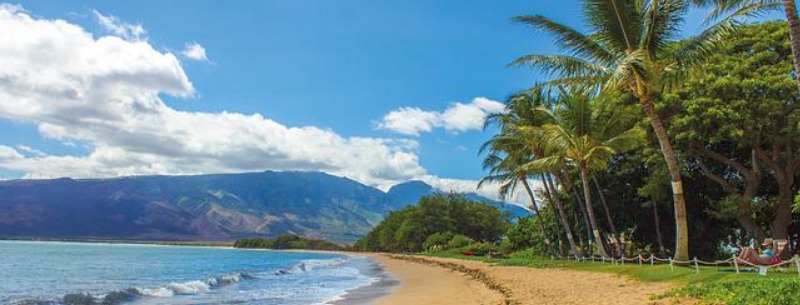Best Hawaiian Beaches 2024
The beaches of Hawaii are among the most diverse in the world. Beaches with white sand, black sand, red sand, and even green sand can be found here, as well as rocky beaches. There is even a glass beach on the Hawaiian island of Kauai, which has millions of small pieces of so-called sea glass.
Choosing which Hawaiian island has the best beaches is a difficult task. These hidden gems and local favorites also provide the expected luxury of a Hawaiian getaway blended with the relaxation desired in a vacation, from green-sand shorelines to snorkeling paradises.
Big Island Beaches
The Big Island of Hawaii is well named – it could hold all the other islands put together, with room to spare. The entire island has the population of a medium-sized town, with 150,000 people (half what it was in Captain Cook’s day) and a low level of tourism compared to Oahu or Maui; despite its fair share of restaurants, bars and so on, this is basically a rural community.
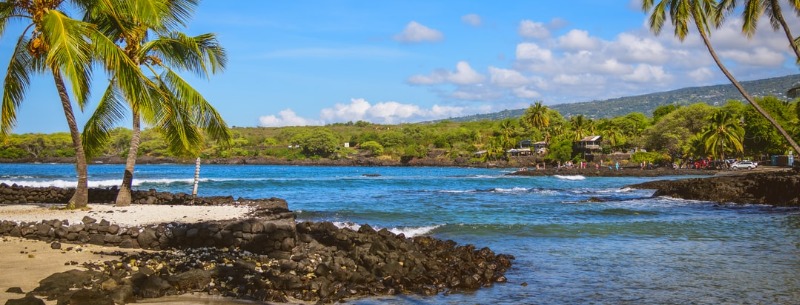
The development that will surely come may put an end to that, but for the moment there are sleepy old towns all over the island, unchanged for a century. The few beach resorts are in the least beautiful areas, built on the barren lava flows of the Kona coast to catch maximum sunshine. The Big Island is, in fact, growing, its southern shore inching ever further out to sea, thanks to the Kilauea volcano, which has destroyed roads and even towns, and spews out pristine beaches of jet-black sand.
Kauai Beaches
Although no point on the tiny island of Kauai is as much as a dozen miles from the sea, the variety of its landscapes is quite incredible. This is the oldest of the major islands, and erosion has spent that many more million years to sculpt it into fantastic shapes.
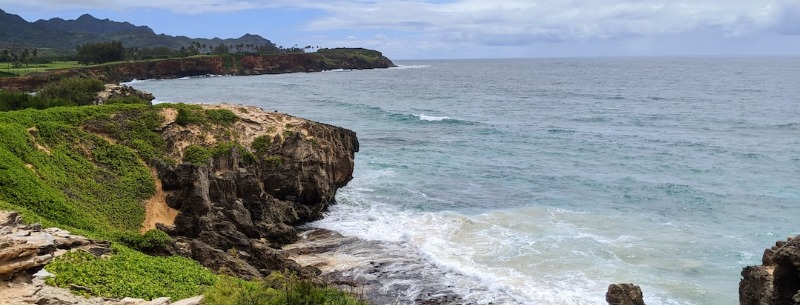
The mist-shrouded extinct volcano Mount Waialeale at its heart is the world’s wettest spot, draining into a high landlocked swamp, full of unique plants and animals. Nearby is the chasm of Waimea Canyon, while the north shore holds the vertiginous green cliffs of the awe-inspiring Na Pali coast, familiar to millions from films such as Jurassic Park and South Pacific but the sole preserve of adventurous hikers.
Kauai is a place to be active, on sea and land; and if you only go on one helicopter flight in your life, this is where to do it, despite recent restrictions on how low they can fly.
Lanai Beaches
Lanai, Hawaii’s most secluded island, is only 18 miles wide and 13 miles long, and once was known as Pineapple Island. However, Lanai was thoughtfully transformed into a famous tourist destination in 1990s. You can reach Lanai Island by airplane. There is also daily ferry service between Lanai Island and Lahaina Harbor of Maui Island provided by Expeditions.
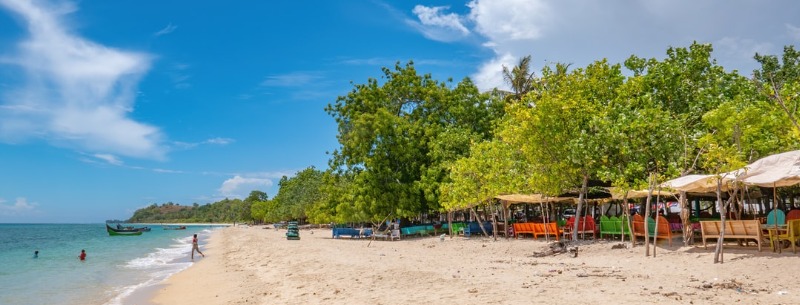
This small island now presents to visitors some of the best hotels among Hawaiian Islands. The Manele Bay Hotel and the Lodge At Koele are the twin resorts with world-class facilities. With 141 square miles lush landscape and miles of coastline, Lanai provides visitors numerous opportunities to explore white sand beaches, hiking trails, and all super-nature of tropical island. Lanai City, the only city on this Island, is located in upcountry. Most population of Lanai island centered in this city, a 1920s plantation town built by James Dole.
Lanai has several beaches favorable for snorkeling and scuba diving to swim with colorful tropical fish in the clear and warm water of the Pacific Ocean.
Hulopoe Beach
This crescent-shaped white sandy beach is not just the only beach on the south coast and easily accessible, but also the best swimming beach on the island. It’s beautiful white sand beach and underwater coral formations makes it the central recreational area on Lanai.
The beach is located in a protected Marine Life Conservation Area so there are numerous and colorful fish as well as unique coral formations found here. Calm waters and the marine conservation make this an excellent site for snorkeling. It takes 15 minutes by car from Lanai City. Other Lanai beaches are more than an hour’s drive.
Shipwreck Beach
Shipwreck beach stretches over miles of northeast coast of Lanai fronting the Kalohi Channel that separates Lanai from Molokai. This channel is known for its strong currents and numerous reefs. The beach is named for the rusty ship Liberty, stuck on the coral reef. The beach is a series of sand, lava rock, and boulders. It is a great place for beach combing, especially the eight mile section that fronts Molokai.
Even though the beach is guarded by a wide reef, swimming in this area is extremely unsafe. Blasting trades come through the Pailolo Channel that separates Maui and Molokai creating a venturi-like funnel, churning up the sea and creating incredibly strong currents in the area. Shipwreck beach is also a great place to spot whales from December to April, when the Pacific humpbacks cruise in from Alaska to winter in the calm offshore waters.
Maui Beaches
The island of Maui, the second largest in the Hawaiian chain, is Oahu’s fastest-growing rival, attracting roughly a third of all visitors to the state. What were once remote, unspoiled beaches, around Kaanapali and Kihei for example, have been swamped by sprawling resorts, and Lahaina, once “whaling capital of the world,” is now little more than just another tourist trap.

On the other hand, the crowds come to Maui for the good reason that it’s still beautiful. This is probably the best equipped of all the islands for activity holidays – whale-watching, windsurfing, diving, sailing, snorkeling and cycling.
The long strip of hotels, malls and condos begins at Kihei, with the road heavily built up on both sides, but thins out beyond the manicured lawns of Wailea, near some superb beaches.
Paluea Beach is ideal for families, while Little Beach, reached by a trail from cactus-lined Makena (or Big) Beach, is famous for (illegal) nudism. Beyond that, the main road deterioriates to become a rough one-lane track with minimal visibility, and which peters out altogether just before La Perouse Bay. Once a significant population center, the beach here is good for snorkeling, and dolphins regularly come to play with swimmers, though you’re forbidden to encourage them.
D. T. Fleming Beach Park
D. T. Fleming beach is long, wide, sandy and surrounded by ironwood trees that provide great shade. Offshore, a shallow sandbar extends out to the edge of the surf. This popular beach is good for swimming when the ocean is calm but rip tides may develop when the surf rises. Caution needs to be taken when swimming due to the steep slope of the beach that causes a backwash even during calm seas. A quaint one-room schoolhouse is located across the road from the beach parking lot.
Kaanapali Beach
Kaanapali beach is located in front of the Kaanapali Resort, extending nearly 3 miles from Kahekili Beach in the north to Hanakaoo Beach in the south. This is one of the best beaches on Maui. It fronts most of the Ka’anapali resorts. There is a concrete path that runs the entire length of the beach from Black Rock to the Hyatt. Black Rock is a popular area that divides the beach in half and is renowned for terrific snorkeling. The rock is almost completely encrusted in coral with a large assortment of fish and sea turtles to make the experience memorable. Surfing is good to the south near the Marriot Hotel.
Kapalua Beach
Kapalua Beach is a beautiful golden stretch along the west coast of the Keanae Peninsula, with a spectacular view of Molokai, and one of the prettiest and safest beaches on Maui – once voted the best beach in the world by Conde Nast Magazine. A golden crescent with swaying palms protected from strong winds and currents by two outstretched lava-rock promontories, Kapalua has calm waters that are perfect for snorkeling, swimming, and kayaking. It is also a good place to watch whales, during the whale season. Even though it borders the Kapalua Bay Hotel, the beach is long enough for everyone to enjoy.
Maluaka Beach
Maluaka (sometimes referred to as Makena Beach) is a beautiful, wide sandy beach that gently slopes into the ocean. Maluaka beach can be perfect for swimming when it’s flat and placid, but it can also offer excellent bodysurfing when the waves come rolling in. A shady, grassy area provides room for picnics and playing.
Wailea Beach
This is the best gold-sand, crescent-shaped beach on Maui’s southwestern coast. Wailea beach is long and wide, with good swimming and snorkeling. When waves are present, this area is also good for bodysurfing. The Four Seasons Hotel, one of the best beach resorts in Hawaii, is located at this beach, and there is a Shopping Village nearby. Whales sometimes appear in winter months. The beach is safe except during periods of high surf or Kona storms (severe winds from west).
Oahu Beaches
Three-quarters of Hawaii’s population live on Oahu, which has monopolized the islands’ trade and tourism since the first European sailors realized that Honolulu offered the safest in-shore anchorage in thousands of miles of ocean. Oahu effectively confines tourists to the tower-block enclave of Waikiki, just east of downtown Honolulu; there are few rooms anywhere else.
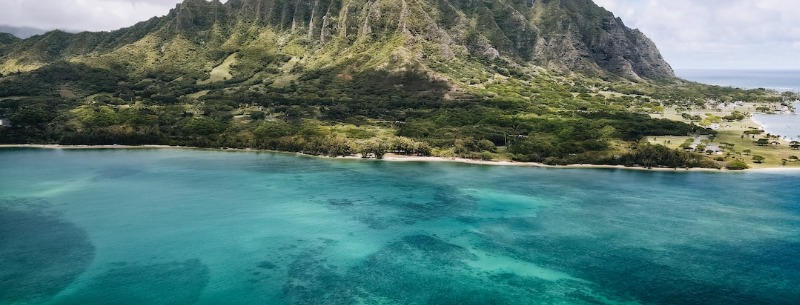
Overcrowding and rampant development mean Oahu can’t be recommended over the Neighbor Islands (as the other Hawaiian islands are known), but it can still give a real flavor of Hawaii. There are some excellent beaches , with those on the north shore a haven for surfers and campers, and the cliffs of the windward side are awesome. The surfing beaches of northern Oahu are famous the world over, but they’re barely equipped for tourists.
Waimea, Sunset and Ehukai beach parks (the latter is home of the Banzai Pipeline, the most famous surfing spot in the world) are all laid-back roadside stretches of sand, where you can usually find a quiet spot to yourself. Sunset is best for savoring the atmosphere, though surfers can be an exclusive bunch. The tame summer waves may make you wonder what all the fuss is about; if you see them at full tilt in the winter, you’ll have no doubts.
